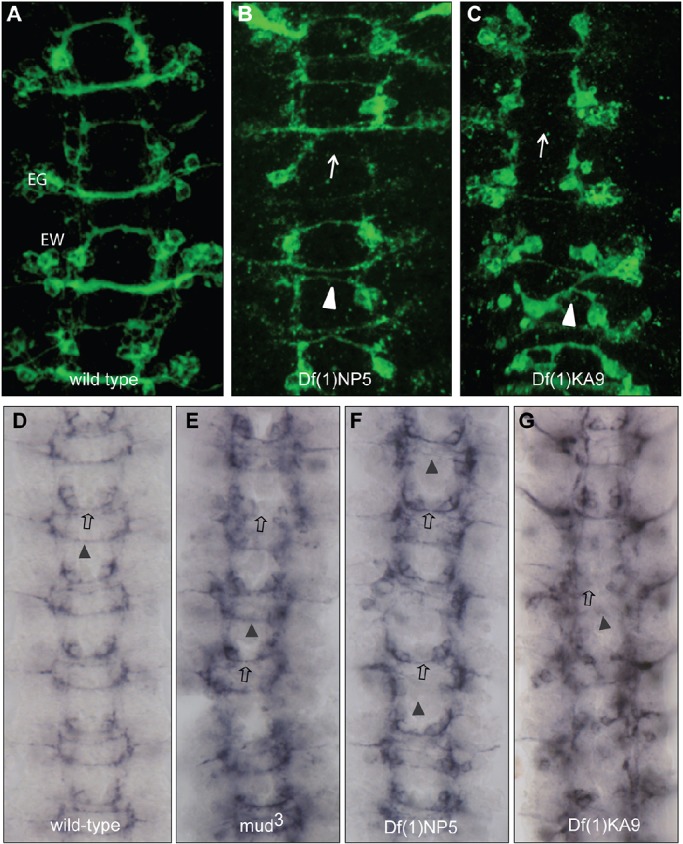Fig. 2.

Loss of mud enhances axon outgrowth defects at the CNS midline in Netrin-deficient embryos. (A) Eagle-positive axons extend in the anterior (EG) and posterior (EW) commissures at the midline of the CNS. (B) Upon loss of Netrin signalling [Df(1)NP5] there is a reduction in the ability of Eagle-positive axons to cross the midline, leading to a thinning of commissures (arrowhead) or complete loss of midline crossing (arrow). (C) Loss of both Mud and Netrin activity [Df(1)KA9] results in a greater disruption of midline crossing, with many axons failing to cross in both anterior and posterior commissures (arrow) or taking aberrant trajectories (arrowhead). (D) Anti-Connectin reveals SP1 axons that extend in the anterior commissure (open arrow) and additional axons extending in the posterior commissure (arrowhead). (E) Loss of mud alone leads to mild defects, with 7% of segments showing failure of SP1 axons to cross. (F) Loss of Netrin signalling results in increased disruption, with axons failing to cross in both anterior (open arrow) and posterior (arrowhead) commissures. (G) Removal of both Mud and Netrin signalling leads to an enhanced phenotype in which midline crossing in the posterior commissure is severely affected and there is an increase in the failure of SP1 axons to cross the midline.
